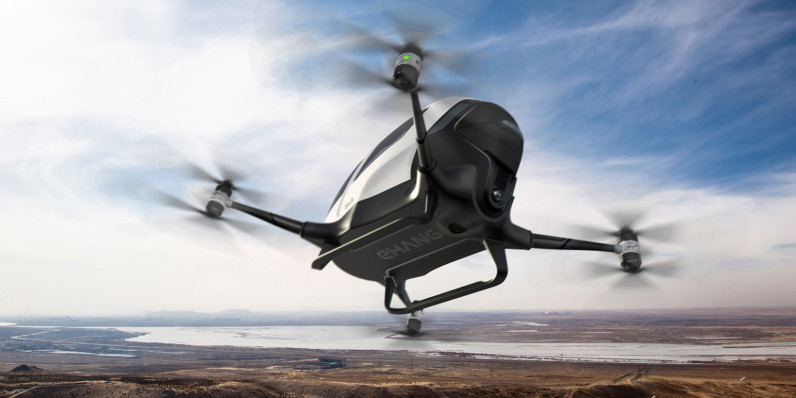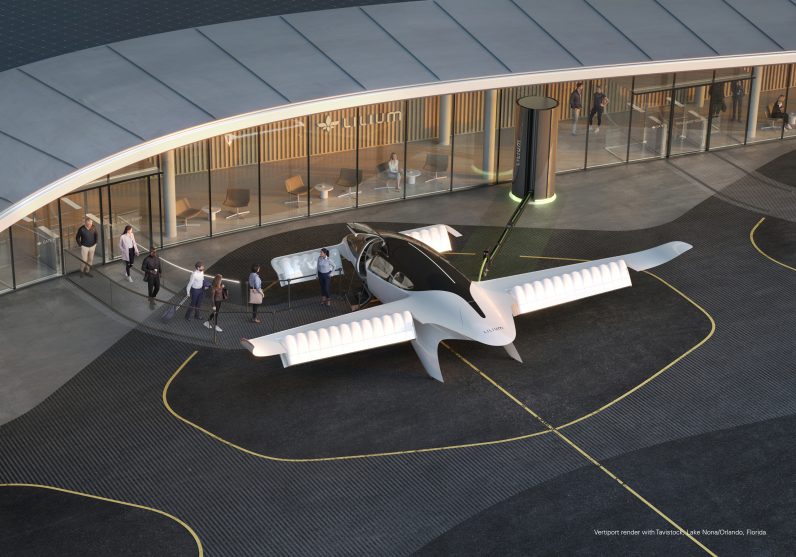The barriers preventing eVTOLs from flying — and how to overcome them
VTOL (vertical take-off and landing) aircraft are coming but not anytime soon. Aircraft progress ranges from conceptual designs to complete prototypes and early test flights.
But we’re a while off from commercial aviation. Further, a focus on the aircraft and the required regulations has overlooked the management of their journeys.
I recently spoke with Corvin Huber, CEO, and CTO of Skyroads, to find out more, and it left me convinced that commercial electric VTOLs aren’t hitting the skies anytime soon.
Building digital roads in the sky means preparing on the ground
Skyroads is developing an automated airspace management and vehicle guidance system that will enable autonomous passenger and cargo vehicles to take off, fly, and land.
Air traffic management starts the moment the flight plan is activated, the doors are closed, and the vehicle is ready to go. But the real work starts even earlier.
At full capacity, eVTOLs are small aircraft designed for speedy refueling/recharging, boarding, and departure in rapid succession.
Huber explains, “In a huge airport, an airplane can wait on the tarmac, or in front of the gate. But in urban air mobility, vertiports (take-off and landing facilities) are designed to be urban compatible. They’re going to be small. There won’t be a square kilometer to park a vehicle on the right.”
He explained that his company had spoken to “just about every relevant eVTOL manufacturer in the world right now.” And what concerns them is not flying, but, “how do we get aircraft into vertiports, on a very tight schedule, with exacting frequency and navigation?”

How close are we to full aircraft automation?

Automation is critical to the future of urban air mobility. Commitments to buy include several hundred respective orders of Archer, Eve UAM, Lilium, Volocopter, and EHang aircraft. But there are not enough pilots to fly these or enough scope in the existing air traffic control to take on these entirely new classes of aircraft.
According to Skyroads, the first step is piloted flight, with ever-increasing levels of automation, relieving the pilot of more and more tasks, until they are a “human-over-the-loop” — otherwise known as Simplified Vehicle Operations (SVO).
The next step is a Remote Pilot In Command (RPIC) that acts as an intermediate step toward full flight automation, based on aviation rules.
The two paths are generally separate until at least 2030. And the transition to fully automated flight is even further off.
Both roles require a pilot to manage frequent levels of complexity. Huber asserts that pilots must command the vehicle but also manage safeguarding against contingencies:
“In talking to the vehicle manufacturers, we are learning that they are also starting to be concerned about how many problems you can offload on the pilots before they even leave the ground.
“And what we’re seeing today is that the industry expects someone to develop a system. This will limit the number of contingencies the pilot has to deal with.” And this is where Skyroads comes in.
Vertiports are the bottlenecks to VTOL aviation

A successful vertiport relies on speed and efficiency with the proper charging or refueling infrastructure.
An early idea was flying and landing on buildings. There have been several investments in placing vertiports on top of existing structures,. An example is VTOL makers Archer and Joby partnering with Reef Technology to turn the top of parking garages into vertiports.
However, Huber questions the structural integrity of the architecture. A lack of human elevators, and necessary power supplies, are just a few concerns. He suggests building from scratch is more feasible than retrofitting.
And for the scale of rapid take-off and landing aircraft that eVTOL companies are promising, there needs to be a lot of work done to provide enough space.
eVTOLs require a three-pronged approach to success
With eVTOLs I see commercial readiness as a three-pronged stool where all legs need to be operational for the chair to stand on its own:
- Aircraft readiness
- Vertiport infrastructure
- Regulations
Huber agreed, noting, “the slowest of these developments will indicate the speed of the entire development.”
“There are currently no EVTOLs flying today: we do not have a market.”
However, Huber raised an additional issue I hadn’t considered – funding.
For companies like Skyroads, having no commercial eVTOLs in the air yet, means gaining market traction in related verticals.
Earlier this year, the company received a $20 million order to facilitate flying camera drones to record and deliver highly-immersive broadcast imagery. They’ll be used during the SailGP (an international yacht race). This replaces the need for helicopters, reducing noise, air pollution, staffing, and cost.
Today’s aviation market needs to see a modicum of progress that allows the investment community to maintain faith in the eVTOL industry. Huber described an industry of players struggling to find early applications to prove their product viability.
Over the last decade (and primarily the previous five years), we’ve heard about the pots of investor money thrown at the VTOL market, including SPACs by Blade, Eve UAM, Lilium, and Archer, to name but a few. Not all of these fundraising efforts have prospered.
Right-sizing and market shift are good for the overall economic health of sectors, unlike overinflated markets. However, it’s an uneasy place to be in when your product’s success relies on more prominent players to get there first. Many cities want urban air mobility to prosper, but they shouldn’t hold their breath waiting.
VTOL (vertical take-off and landing) aircraft are coming but not anytime soon. Aircraft progress ranges from conceptual designs to complete prototypes and early test flights.
But we’re a while off from commercial aviation. Further, a focus on the aircraft and the required regulations has overlooked the management of their journeys.
I recently spoke with Corvin Huber, CEO, and CTO of Skyroads, to find out more, and it left me convinced that commercial electric VTOLs aren’t hitting the skies anytime soon.
Building digital roads in the sky means preparing on the ground
Skyroads is developing an automated airspace management and vehicle guidance system that will enable autonomous passenger and cargo vehicles to take off, fly, and land.
Air traffic management starts the moment the flight plan is activated, the doors are closed, and the vehicle is ready to go. But the real work starts even earlier.
At full capacity, eVTOLs are small aircraft designed for speedy refueling/recharging, boarding, and departure in rapid succession.
Huber explains, “In a huge airport, an airplane can wait on the tarmac, or in front of the gate. But in urban air mobility, vertiports (take-off and landing facilities) are designed to be urban compatible. They’re going to be small. There won’t be a square kilometer to park a vehicle on the right.”
He explained that his company had spoken to “just about every relevant eVTOL manufacturer in the world right now.” And what concerns them is not flying, but, “how do we get aircraft into vertiports, on a very tight schedule, with exacting frequency and navigation?”

How close are we to full aircraft automation?

Automation is critical to the future of urban air mobility. Commitments to buy include several hundred respective orders of Archer, Eve UAM, Lilium, Volocopter, and EHang aircraft. But there are not enough pilots to fly these or enough scope in the existing air traffic control to take on these entirely new classes of aircraft.
According to Skyroads, the first step is piloted flight, with ever-increasing levels of automation, relieving the pilot of more and more tasks, until they are a “human-over-the-loop” — otherwise known as Simplified Vehicle Operations (SVO).
The next step is a Remote Pilot In Command (RPIC) that acts as an intermediate step toward full flight automation, based on aviation rules.
The two paths are generally separate until at least 2030. And the transition to fully automated flight is even further off.
Both roles require a pilot to manage frequent levels of complexity. Huber asserts that pilots must command the vehicle but also manage safeguarding against contingencies:
“In talking to the vehicle manufacturers, we are learning that they are also starting to be concerned about how many problems you can offload on the pilots before they even leave the ground.
“And what we’re seeing today is that the industry expects someone to develop a system. This will limit the number of contingencies the pilot has to deal with.” And this is where Skyroads comes in.
Vertiports are the bottlenecks to VTOL aviation

A successful vertiport relies on speed and efficiency with the proper charging or refueling infrastructure.
An early idea was flying and landing on buildings. There have been several investments in placing vertiports on top of existing structures,. An example is VTOL makers Archer and Joby partnering with Reef Technology to turn the top of parking garages into vertiports.
However, Huber questions the structural integrity of the architecture. A lack of human elevators, and necessary power supplies, are just a few concerns. He suggests building from scratch is more feasible than retrofitting.
And for the scale of rapid take-off and landing aircraft that eVTOL companies are promising, there needs to be a lot of work done to provide enough space.
eVTOLs require a three-pronged approach to success
With eVTOLs I see commercial readiness as a three-pronged stool where all legs need to be operational for the chair to stand on its own:
- Aircraft readiness
- Vertiport infrastructure
- Regulations
Huber agreed, noting, “the slowest of these developments will indicate the speed of the entire development.”
“There are currently no EVTOLs flying today: we do not have a market.”
However, Huber raised an additional issue I hadn’t considered – funding.
For companies like Skyroads, having no commercial eVTOLs in the air yet, means gaining market traction in related verticals.
Earlier this year, the company received a $20 million order to facilitate flying camera drones to record and deliver highly-immersive broadcast imagery. They’ll be used during the SailGP (an international yacht race). This replaces the need for helicopters, reducing noise, air pollution, staffing, and cost.
Today’s aviation market needs to see a modicum of progress that allows the investment community to maintain faith in the eVTOL industry. Huber described an industry of players struggling to find early applications to prove their product viability.
Over the last decade (and primarily the previous five years), we’ve heard about the pots of investor money thrown at the VTOL market, including SPACs by Blade, Eve UAM, Lilium, and Archer, to name but a few. Not all of these fundraising efforts have prospered.
Right-sizing and market shift are good for the overall economic health of sectors, unlike overinflated markets. However, it’s an uneasy place to be in when your product’s success relies on more prominent players to get there first. Many cities want urban air mobility to prosper, but they shouldn’t hold their breath waiting.

